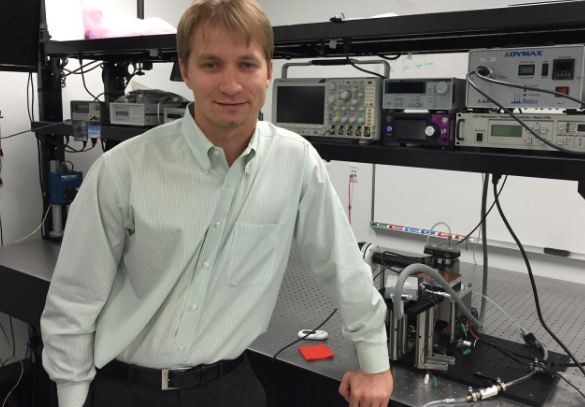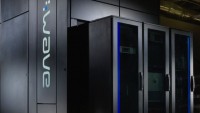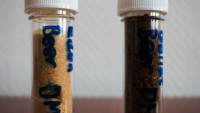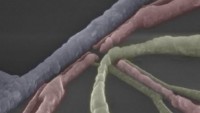UCF Scientists Develop Most Efficient Quantum Cascade Laser Yet
| Arthur Dominic Villasanta | | Oct 20, 2016 09:56 PM EDT |
(Photo : University of Central Florida) A UCF team led by Assistant Professor Arkadiy Lyakh developed a simpler process for creating QCLs with comparable performance and better efficiency.
A team of University of Central Florida (UCF) researchers has produced the most efficient quantum cascade laser ever designed -- and done it in a way that makes the lasers easier to manufacture.
Quantum cascade lasers (QCLs) are miniscule -- they're smaller than a grain of rice -- but they pack a punch. Compared to traditional lasers, QCLs offer higher power output and can be tuned to a wide range of infrared wavelengths. They can also be used at room temperature without the need for bulky cooling systems.
Like Us on Facebook
But because they're difficult and costly to produce, QCLs aren't used much outside the U.S. Department of Defense.
A UCF team led by Assistant Professor Arkadiy Lyakh developed a simpler process for creating QCLs with comparable performance and better efficiency.
"The previous record was achieved using a design that's a little exotic, that's somewhat difficult to reproduce in real life," said Lyakh.
"We improved on that record, but what's really important is that we did it in such a way that it's easier to transition this technology to production. From a practical standpoint, it's an important result."
That could lead to QCL's greater usage in spectroscopy, such as using the lasers as remote sensors to detect gases and toxins in the atmosphere.
Lyakh also envisions portable health devices. For instance, a small QCL-embedded device could be plugged into a smartphone and used to diagnose health problems by simply analyzing one's exhaled breath.
"But for a handheld device, it has to be as efficient as possible so it doesn't drain your battery and it won't generate a lot of heat."
The method that previously produced the highest efficiency called for the QCL atop a substrate made-up of more than 1,000 layers, each one barely thicker than a single atom. Each layer was composed of one of five different materials, making production challenging.
The new method developed at UCF uses only two different materials -- a simpler design from a production standpoint.
Lyakh came to UCF in September 2015 from Pranalytic, Inc., a California-based tech company, where he led QCL development and production. His research team at UCF included graduate students Matthew Suttinger, Rowel Go, Pedro Figueiredo and Ankesh Todi, and research scientist Hong Hsu.
The results were recently published in the scientific journal, Applied Physics Letters.
TagsQuantum cascade laser, QCL, University of Central Florida, Arkadiy Lyakh
©2015 Chinatopix All rights reserved. Do not reproduce without permission
EDITOR'S PICKS
-

Did the Trump administration just announce plans for a trade war with ‘hostile’ China and Russia?
-

US Senate passes Taiwan travel bill slammed by China
-

As Yan Sihong’s family grieves, here are other Chinese students who went missing abroad. Some have never been found
-

Beijing blasts Western critics who ‘smear China’ with the term sharp power
-

China Envoy Seeks to Defuse Tensions With U.S. as a Trade War Brews
-

Singapore's Deputy PM Provides Bitcoin Vote of Confidence Amid China's Blanket Bans
-

China warns investors over risks in overseas virtual currency trading
-

Chinese government most trustworthy: survey
-

Kashima Antlers On Course For Back-To-Back Titles
MOST POPULAR
LATEST NEWS
Zhou Yongkang: China's Former Security Chief Sentenced to Life in Prison

China's former Chief of the Ministry of Public Security, Zhou Yongkang, has been given a life sentence after he was found guilty of abusing his office, bribery and deliberately ... Full Article
TRENDING STORY

China Pork Prices Expected to Stabilize As The Supplies Recover

Elephone P9000 Smartphone is now on Sale on Amazon India

There's a Big Chance Cliffhangers Won't Still Be Resolved When Grey's Anatomy Season 13 Returns

Supreme Court Ruled on Samsung vs Apple Dispute for Patent Infringement

Microsoft Surface Pro 5 Rumors and Release Date: What is the Latest?














